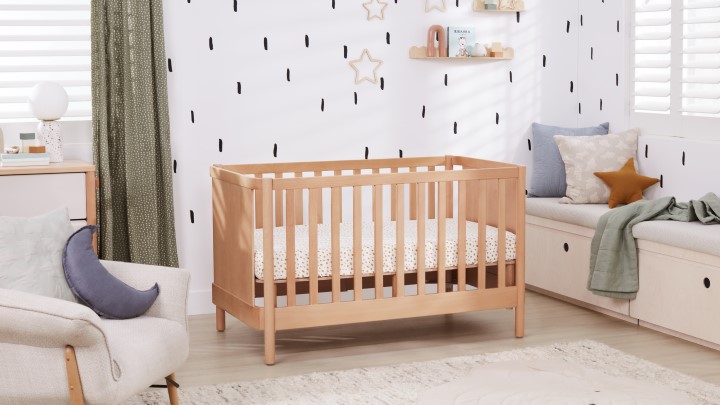Koala has grown substantially since its launch in 2015 with the brand expanding beyond its initial product line and into the living room with a range of homewares. Now, Koala is growing into a new room in the home: the nursery. For the past two years, the team have been testing and trialling a set of nursery products, called Joey, which includes a baby cot and mattress, a kids bed and mattress, drawers and a guard rail, in order to deliver the safest possible set of products. But this product
oduct development journey was surprisingly difficult, according to Koala’s VP of product and design James Whitta.
He told Inside Retail that buying baby furniture is extremely confronting, confusing, and scary.
“There’s so much choice out there, and so much conflicting information. If it’s your first child, there is so much fear around safety [and] that was really where we started: we wanted to find a way to simplify that process,” Whitta said
While Koala has delivered quality furniture before, navigating the various safety standards around products for children around the world was a new challenge, which presented new opportunities to the business.
Whitta said that Koala decided to simply comply with all safety standards:something that he said not many other players in the market can claim.
“That really dwarfed everything else in terms of understanding. It was really scary to us to learn that most baby mattress brands don’t even test [the product],” Whitta said.
“It’s the thing that’s most likely to harm a sleeping child, so we spent as much time as possible trying to solve all the safety concerns and make sure it was as safe as possible.
“Building out a new category is exciting: you get to learn all these new things. It’s all adjacent to our core offering. Furniture is furniture to a certain degree, but everything’s just a bit more complicated in this category.
“But that’s also part of the fun.”
Growing up
One of the major reasons Koala decided to take on the new category was personal – not only for its customers, but also for its own staff.
When Koala first launched, it largely targeted younger Australians. But as its customers have grown up, they’ve started needing different pieces of furniture compared to when the brand was first attractive to them.
The same can be said for its own staff, many of whom have had kids during their time at Koala, and saw first-hand what the process of buying cots and mattresses looked like.
There was a clear opportunity, and a chance for the team at Koala to disrupt another segment of the market.
“There’s a lot of [poor quality] stuff out there, and it seems like if you’re willing to pay a bit more money to have a more stylish and safer product, you actually have to spend a lot more,” Whitta said.
“It was either spend $200, or spend $2000, and that’s really frustrating. So we knew that we needed our range to focus on style, and quality, without costing an arm and a leg.”
The design and pricing of the range is also informed by Whitta’s prior experience as product design leader at Ikea, where he gained valuable experience in delivering quality products at a low price.
“When you have the price constraints that they do, [and] want to do something better than everybody else, you really have to put the time in: you have to invest in engineering, and in growing your supplier competence,,” Whitta said.
“All of that takes time and effort, and most companies aren’t willing to or able to do it. I’ve really tried to bring those lessons to Koala. In saying that, I was always arguing that if we charged another $10 or $15 [for a product at Ikea], we could deliver something even more amazing.
“I think Joey is a good example of that: It’s not the cheapest on the market, but for a comparable product it’s half the price of [anywhere] else.”
A self-sustaining cycle
Another lesson learned from Ikea is the need for a focus on sustainability, and the power of building products that last.
To Whitta, the most sustainable thing you can do is to build a product that can be handed down from generation to generation. In order to facilitate that, he said Koala is heading towards offering a repair and resale service beyond its Koala ‘Second Home’ outlet.
Launched last year, the outlet resells products that have been returned to Koala following its 120-night trial period. Whitta said most products just need a good clean, and about 90 per cent of its returned products are resold.
“That to me is the first step [and] we will keep building on it,” Whitta said.
“The ultimate goal is for us to have the ability to either lease their products, and then we can fix them up and resell them, and keep that cycle going again and again.
“It’s the responsible thing to do, but it also makes financial sense. We’re not a charity, and there’s the opportunity to resell a product at a reduced price, but also at a reduced cost for us.
“That cycle can sustain itself.”

